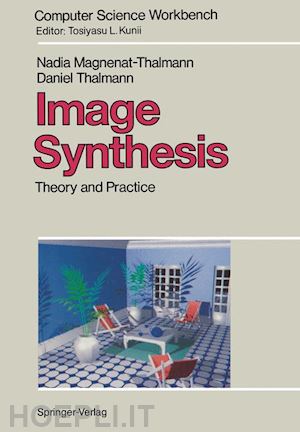Image Synthesis: Theory and Practice is the first book completely dedicated to the numerous techniques of image synthesis. Both theoretical and practical aspects are treated in detail. Numerous impressive computer-generated images are used to explain the most advanced techniques in image synthesis. The book contains a detailed description of the most fundamental algorithms; other less important algorithms are summarized or simply listed. This volume is also a unique handbook of mathematical formulae for image synthesis. The four first chapters of the book survey the basic techniques of computer graphics which play an important role in the design of an image: geometric models, image and viewing transformations, curves and surfaces and solid modeling techniques. In the next chapters, each major topic in image synthesis is presented. The first important problem is the detection and processing of visible surfaces, then two chapters are dedicated to the central problem of light and illumination. As aliasing is a major problem in image rendering, the fundamental antialiasing and motion blur techniques are explained. The most common shadow algorithms are then presented as well as techniques for producing soft shadows and penumbrae. In the last few years, image rendering has been strongly influenced by ray tracing techniques. For this reason, two chapters are dedicated to this important approach. Then a chapter is completely dedicated to fractals from the formal Mandelbrot theory to the recursive subdivision approaches. Natural phenomena present a particularly difficult challenge in image synthesis. For this reason, a large portion of the book is devoted to latest methods to simulate these phenomena: particle systems, scalar fields, volume density scattering models. Various techniques are also described for representing terrains, mountains, water, waves, sky, clouds, fog, fire, trees, and grass. Several techniques for combining images are also explained: adaptive rendering, montage and composite methods. The last chapter presents in detail the MIRALab image synthesis software.











